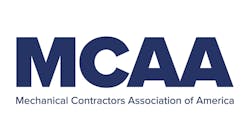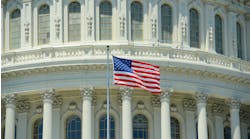Latest from Around the Web
Sponsored
Supreme Court Ruling on Chevron Decision Likely to Further Impact Water Industry
A recent Supreme Court ruling is expected to further impact the water industry in what has been an especially consequential two terms for the sector.
In June, the Court issued a 6-3 decision overruling its landmark 1984 decision in Chevron v. Natural Resources Defense Council, which deferred to a federal agency’s reasonable interpretation of a statute. The decision in Loper Bright Enterprises v. Raimondo rolls back the power of agencies to interpret more ambiguous laws and instead gives courts leeway to exercise judgment.
“It used to be the courts would say, ‘If what the agency does sounds reasonable, we’ll defer to it,’ but that's not the case anymore,” said Barry Hartman, a partner at K&L Gates who previously served as Acting Assistant Attorney General for the Environment and Natural Resource Division in the US Department of Justice. “The court is going to say, ‘We're going to see if the statute really authorizes the agency to do it.’”
Impact on the Water Industry
The decision affects anyone subject to federal regulation, but the long-term implications of overturning the so-called Chevron-doctrine may have a significant impact on current and future regulations governing the construction industry. Amid ongoing action by the Biden Administration to promulgate drinking water and wastewater regulation, that may also mean potential impacts on the water sector.
“We are watching closely to see the consequences for the Administration's proposed rules on PFAS, standards for air/water permitting,” said Zack Perconti, Vice President of Government Affairs at the National Utility Contractors Association (NUCA).
Some anticipated challenges are related to an April 2024 rule by the Environmental Protection Agency (EPA) designating PFOA and PFOS as hazardous substances. The designation marked the EPA’s first-ever use of section 102(a) of the Comprehensive Environmental Response, Compensation, and Liability Act, or CERCLA, also known as Superfund—a rationale that will likely come under scrutiny.
The American Water Works Association, the National Association of Manufacturers, and The Chemours Company have already filed challenges in the US Circuit Court of Appeals for the DC Circuit against the Maximum Contaminant Levels (MCL) standards for various PFAS compounds.
“Although none of the statements explicitly mention the US Supreme Court’s decision in Loper Bright, you will note that there are several issues that involve questions of statutory interpretation that could trigger a review using the standard set out,” Hartman told CONTRACTOR Magazine.
More Litigation to Come
Additional rules may also stand on less firm legal ground as many associations and their lawyers review the current inventory of federal regulations to determine which, if any, are potentially unlawful in a post-Chevron world.
“We certainly expect a great deal more litigation from all sides in response to agency rulemakings,” Perconti told CONTRACTOR. “Congress will need to carefully exercise its legislative authority, and will continue to rely in part on industry experts and advocates to provide technical expertise and advice.“
In recent weeks, NUCA and other trade associations have encouraged the Administration to direct agencies to pause regulatory rulemakings to evaluate their policies and procedures and determine whether proposed rules are likely to be upheld. As of July 1, 2024, it estimated over 1,000 major rules across industries and in various stages of review at federal agencies which would need to be reevaluated in light of the Loper Bright ruling.
Two Impactful Terms
The ruling comes on the heels of Court action on a number of environmental and regulatory cases between this and last term. In 2023, a landmark Supreme Court decision in Sackett v. EPA narrowed the federal government's authority to regulate water pollution. In that ruling, the court said that wetlands lack a “continuous surface connection” to larger, regulated bodies of water and did not fall under the Clean Water Act. In Texas v. New Mexico and Colorado, it also took action regarding disputes between states over water usage that have major implications for interstate water cases.
Meanwhile, the industry will be looking closely at the results of a Clean Water Act case that SCOTUS agreed to hear in October, City and County of San Francisco v. Environmental Protection Agency, and its potential implications for National Pollutant Discharge Elimination System (NPDES) permitting.
“There's a renewed focus on federal permitting requirements that is getting a lot of attention from both industry and Capitol Hill,” Perconti said.
In addition, massive new investments as part of a bipartisan infrastructure measure are having a significant impact on efforts to modernize the nation’s wastewater systems and deliver clean drinking water.
All Eyes on Congress
Going forward as a result of Loper, Congress may now need to be more precise in its language or be forced to make changes to laws. Federal agencies are likely to be more careful about how to comment on regulations and evaluate whether they have authority for particular rulemaking and detailed guidance for stakeholders, resulting in longer timelines.
In Hartman’s view, many regulations are likely to be challenged, but few will be successful because an agency may actually have satisfactory grounds for implementing a rule.
At the same time, water industry groups may be forced to adapt by putting more effort into the rulemaking comment process and creating a record that shows any concerns have been adequately raised.
“There may be more fragmentation of the positions of the industry, which is not necessarily a bad thing,” Hartman said. “They’ll have to be proactive and specific if they want to get an agency to do what they want.”
For Perconti, industry coordination may be more important than ever—at least with regards to educating lawmakers and regulators in the post-Chevron landscape.
Brian Turmail, Vice President of Public Affairs and Workforce of the Association of General Contractors of America, said it was too early to say how the overturning of the Chevron doctrine will require the industry to adapt.
“But certainly everyone benefits when lawmakers write more specific and detailed laws, instead of deferring to unelected bureaucrats to craft them,” he said.


